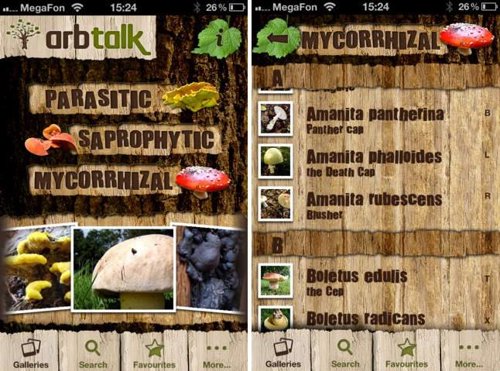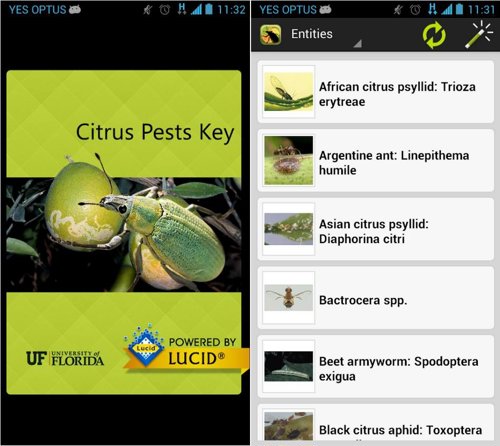Arborists work in the field and in the trees—not in an office cubicle. They have limited access to normal office essentials—making handheld technology the next big trend in the tree and landscape industry.
Find out why more arborists are using smartphones and tablets on the job.
Identifying tree pests and diseases? There’s an app for that!
Learning new knots? There’s an app for that!
Inventorying trees? There’s an app for that!
Below are 10 apps the Davey Institute recommends you download on your smartphone to become a more equipped and efficient tree and plant care professional.
1. Chipero: Need a place to dispose your extra woodchips? Download Chipero to find a place near you at which to empty your chip truck. Chipero connects you with nearby homeowners, farms, schools and other organizations that want your leftover woodchips—whenever you’re working. Save time and money and create a green solution for your excess woodchips.
2. Tree Fungi ID App: This app is a smartphone version of the popular fungi directory at www.arbtalk.co.uk. The app contains the most common fungi that arborists are likely to come across in the field, plus many more. Each fungi comes with a list of general information covering description, mode of decay, significance, location and general notes.
 |
3. Arborist Knots: Arborist Knots is the smartphone version of the popular knot guide at www.arbtalk.co.uk. With all of the most important knots required by every arborist, plus several extras thrown in for good measure, you can be sure there is a knot here to cover any aspect of tree work you are undertaking.
4. Dirr’s Tree and Shrub Finder: This app covers 1,670 species and 7,800 cultivars, with 7,600 high-quality plant images. The plant database is searchable by 72 criteria, including hardiness zones, water and light requirements, growth characteristics, flowers, fruits and fall colors. The app offers the latest and most reliable information on woody landscape plants for the landscape professional and the home gardener alike in an inexpensive and accessible format.
5. Arbtalk: Need advice from another arborist or just want to chat with like-minded individuals? This app allow you to stay connected with the Arbtalk online community, through forums and discussions with professionals in the field.
6. Citrus Pests Key: This app, created by the United States Department of Agriculture (USDA), is aimed primarily at extension agents, inspectors, and other plant professionals with access to a light microscope and hand lens. It is designed to help users determine which type of citrus insect pest they have encountered by featuring an interactive key coupled with illustrated, descriptive fact sheets for each pest. Citrus Pests Key is intended to be used as a screening aid. For definitive species identification, specimens should be sent to an expert for verification.
 |
7. Arbor Quote: Using your smartphone, send an estimate for tree care services from the job site directly to your customer. This app streamlines processes, serves customers and helps you grow your business. Reduce paperwork and time in the office. This simple, easy-to-use estimator gathers and stores key data about the job right in your smartphone for future reference.
8. Leafsnap: This app is the first in a series of electronic field guides being developed by researchers from Columbia University, the University of Maryland, and the Smithsonian Institution. This free mobile app uses visual recognition software to help identify tree species from photographs of their leaves.
9. The Purdue Tree Doctor App: This app has been developed by experts at Purdue University to help people better identify and manage tree problems caused by a variety of factors, including insects and diseases. Landscape professionals, arborists and garden center personnel can use this app to improve communication with their customers. Information in this app is useful in the Midwestern and eastern U.S.
10. Garden Mentor: This application is a simple and easy-to-use mobile tree guide and to-do app for iPhone and Android. It’s perfect for both professionals and enthusiasts. Browse or search a detailed alphabetical guide to trees, shrubs, perennials, grasses, roses and bulbs. It includes more than 1,500 entries.



